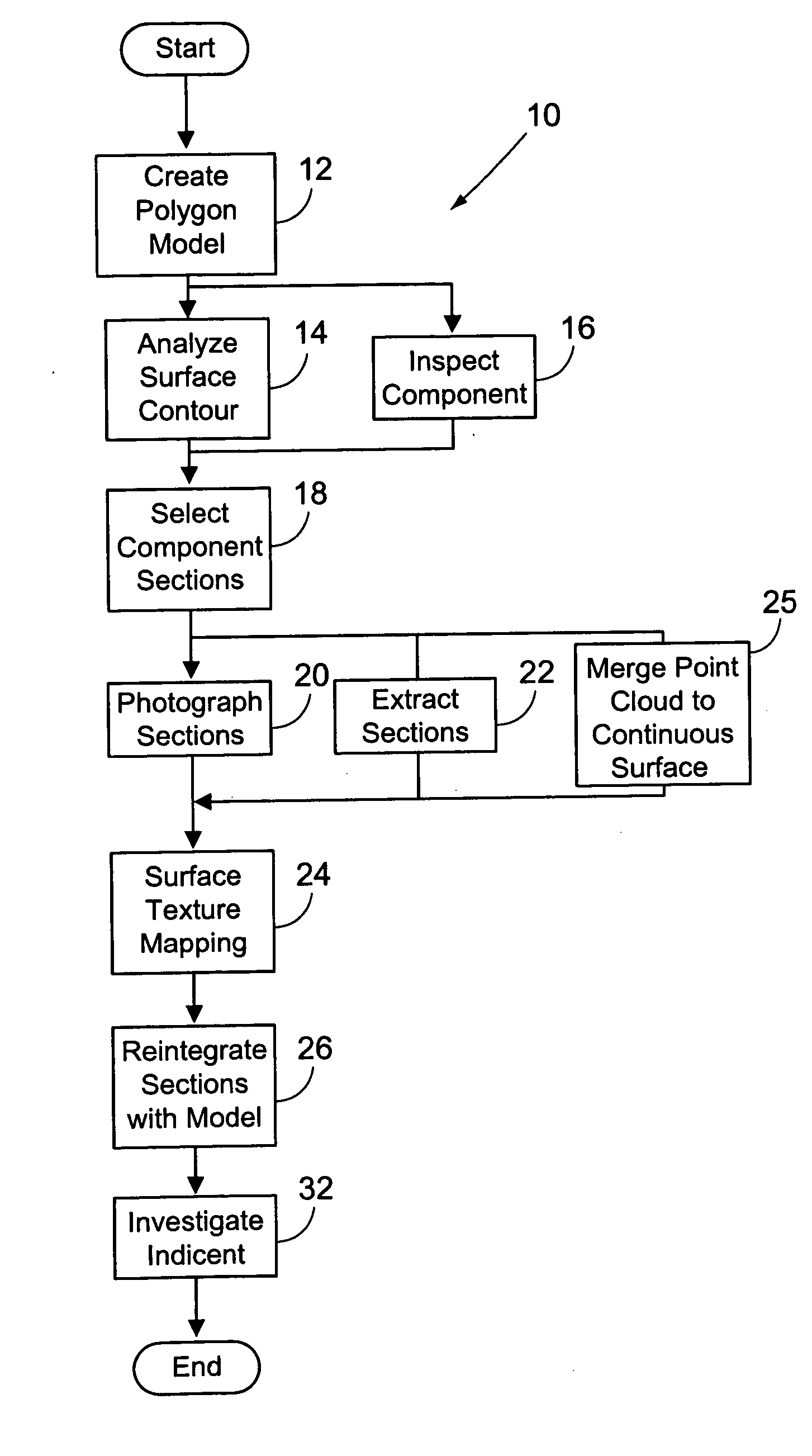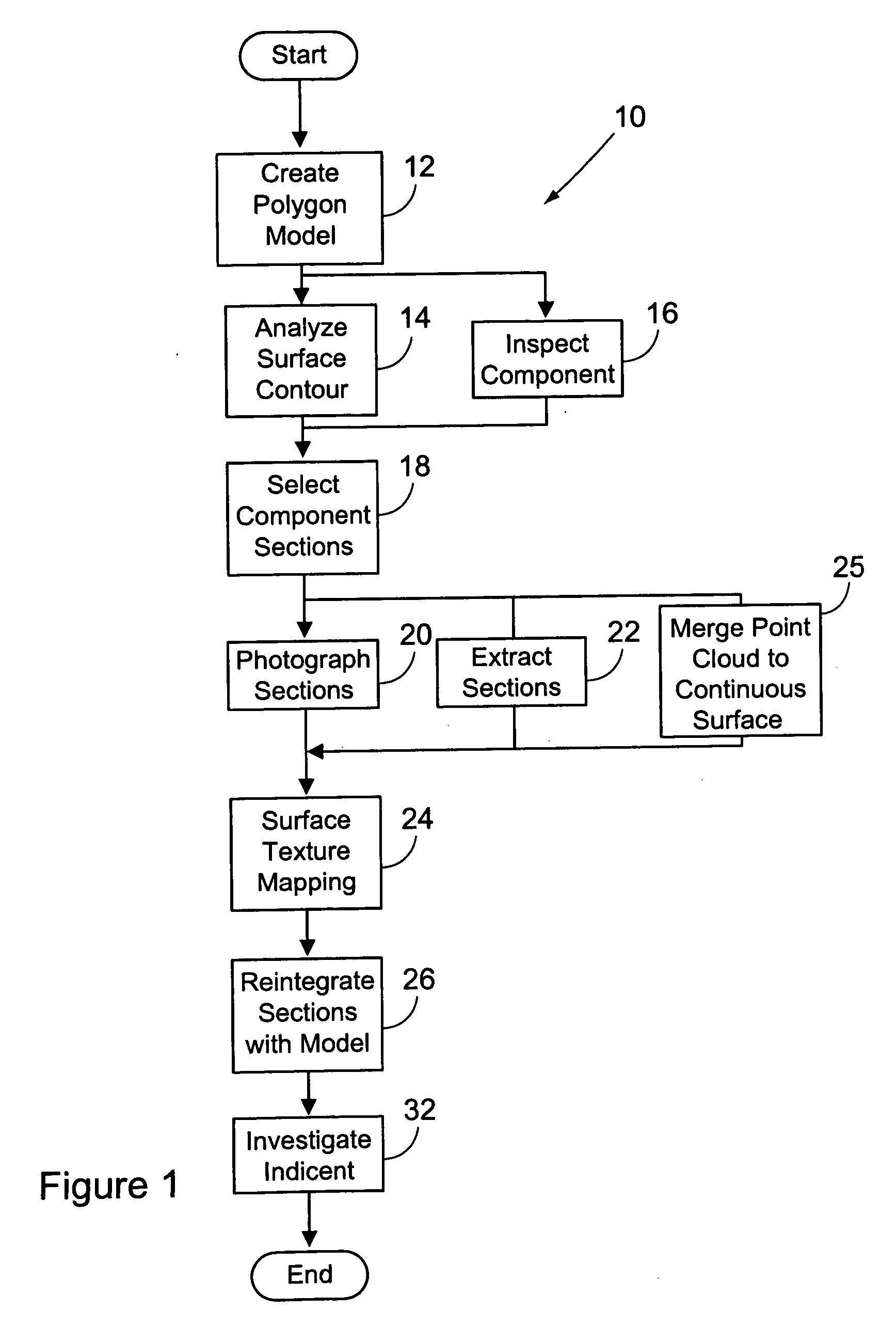Investigation of destroyed assemblies and identification of components thereof using texture mapping
a technology of assembly and component, applied in the field of assembly destruction investigation and assembly component identification by texture mapping, can solve the problems of inability to identify components, and inability to locate components, etc., and achieve the effect of enhancing the ability to investigate the component parts and quickly and relatively easily identifying component parts
- Summary
- Abstract
- Description
- Claims
- Application Information
AI Technical Summary
Benefits of technology
Problems solved by technology
Method used
Image
Examples
Embodiment Construction
[0015] Referring to the accompanying drawings in which like reference numbers indicate like elements, FIG. 1 illustrates a method in accordance with a preferred embodiment of the present invention. The method 10 includes selecting sections of the surface of a component from a disassembled assembly, photographing the selected sections, and surface texture mapping the photographs to the representations of the sections. To the extent the term “section” is used in the claims or is added by amendment, such term should be construed as meaning some or all of the surface of the item or element that it qualifies. A component, therefore, may have a surface of one, or more, three dimensional sections.
[0016] Typically, the method 10 begins with the creation of a three-dimensional representation of one or more components from the disassembled assembly as shown at operation 12 of FIG. 1. The creation of the representation generally proceeds as disclosed in co-owned, co-pending application U.S. p...
PUM
 Login to View More
Login to View More Abstract
Description
Claims
Application Information
 Login to View More
Login to View More - R&D
- Intellectual Property
- Life Sciences
- Materials
- Tech Scout
- Unparalleled Data Quality
- Higher Quality Content
- 60% Fewer Hallucinations
Browse by: Latest US Patents, China's latest patents, Technical Efficacy Thesaurus, Application Domain, Technology Topic, Popular Technical Reports.
© 2025 PatSnap. All rights reserved.Legal|Privacy policy|Modern Slavery Act Transparency Statement|Sitemap|About US| Contact US: help@patsnap.com


